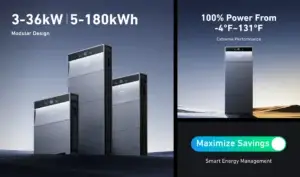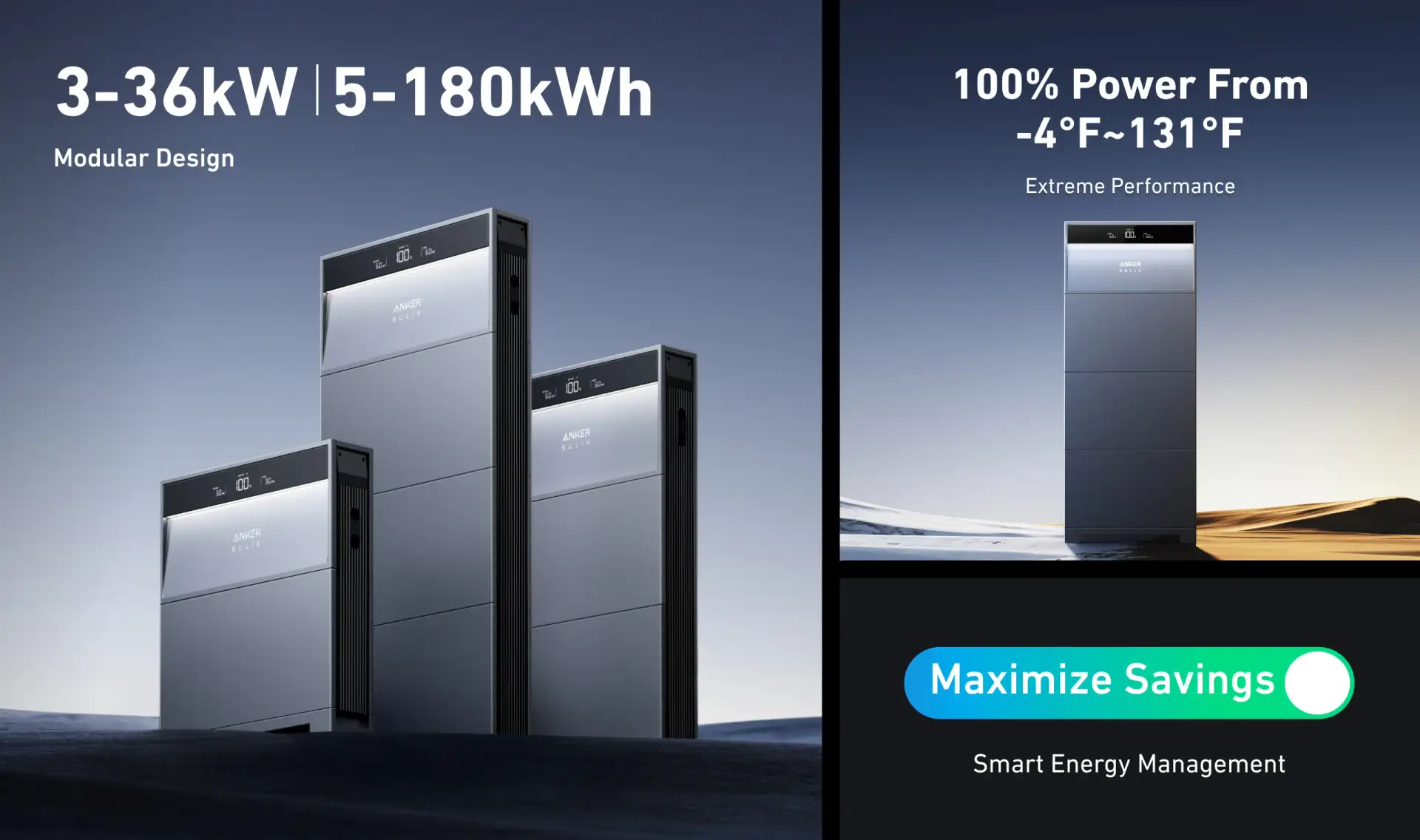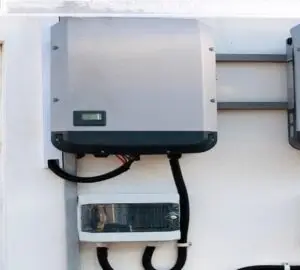
How Does Solar Battery Storage Work?
As Arizona continues to face rising temperatures and higher energy demands, many homeowners are turning to solar solutions not just

As Arizona continues to face rising temperatures and higher energy demands, many homeowners are turning to solar solutions not just for cost savings but for long-term reliability. While solar panels harness the sun’s power during the day, solar battery storage ensures that energy is available even after sunset or during outages. This guide explains how solar battery storage works, why it’s essential in Arizona, and how you can benefit from storing excess power for later use.
Topics Covered
ToggleSolar battery storage is a system that allows you to store the extra energy your solar panels generate during the day. Instead of sending unused electricity back to the grid, it’s stored in batteries for use at night or during power outages. This helps Arizona homeowners become less dependent on utility companies and better prepared for emergencies. Battery storage for solar power is especially valuable in places with strong sun and high energy use like Arizona.
Solar battery storage works by capturing and storing the extra electricity your solar panels generate during the day. This stored energy can then be used later, such as in the evening or during a power outage. The system includes an inverter that converts solar power from direct current (DC) to alternating current (AC), which is what your home uses. By adding battery storage for solar power, Arizona homeowners gain energy flexibility and can reduce their reliance on the grid.
Step 1: Solar panels collect sunlight and convert it into DC electricity
Step 2: The solar inverter changes DC power to usable AC power for your home
Step 3: Excess energy that’s not immediately used is sent to the battery for storage
Step 4: When solar panels aren’t producing, the battery discharges stored power
Step 5: Your home draws from the battery instead of the grid, reducing your energy costs
The right size for your solar battery depends on how much electricity you use daily and what you want to power during an outage. Some Arizona homeowners want full-home backup, while others only need essential appliances like the fridge, lights, and Wi-Fi. On average, a 10 to 20 kWh battery is suitable for typical Arizona households, but larger homes or those with high energy usage may need more. A professional installer can help determine the ideal setup.
Most solar batteries last between 10 to 15 years, depending on the brand, usage, and maintenance. Arizona’s hot climate can affect battery performance over time, especially if systems aren’t installed with proper ventilation. Choosing high-quality, heat-resistant batteries and installing them in shaded or temperature-controlled areas can help extend their lifespan. Always ask your provider about warranty coverage and expected degradation rates.
If your battery fills up completely during the day, the system either stops charging or exports the extra power to the grid. This ensures your panels continue operating efficiently without wasting energy. If the battery is drained and solar production is low, your home seamlessly draws power from the grid to keep everything running. Arizona homeowners benefit from this automatic transition, especially during high energy demand periods.
One of the biggest advantages of solar battery storage is the ability to store excess power during the day and use it later. But when your battery is full, that unused solar energy can still benefit you. Many Arizona utilities offer net metering, which allows homeowners to send that surplus power back to the grid and receive energy credits. This makes your solar investment even more rewarding.
Net metering allows Arizona homeowners to send unused solar energy back to the grid in exchange for utility credits. During sunny days, when your solar panels generate more power than your home consumes, the excess electricity is exported to your utility provider. In return, you receive credits that reduce your future electricity bills. Programs vary by provider—APS, SRP, and TEP all have different rules and rates. These credits can significantly lower your energy costs over time, especially if your battery is already full.
Adding battery storage to your solar system in Arizona comes with valuable incentives. The Federal Solar Tax Credit (ITC) allows homeowners to claim up to 30% of their system’s cost on their taxes. Additionally, some Arizona utility companies offer rebates and special programs for battery installations. Battery systems can also help reduce peak-time charges and qualify you for time-of-use savings. Combined, these benefits make battery storage not just a smart energy choice but also a financially rewarding one.
Solar battery storage gives Arizona homeowners the power to use their own energy, day or night. By storing solar power for later use, you reduce how often you need to pull electricity from the grid. This means lower bills, more energy control, and less worry during outages or peak pricing hours. It’s a reliable way to protect your home from rising energy costs and grid instability.
A solar battery storage system captures excess electricity from your solar panels and stores it for later use. It provides backup power during outages or at night when panels aren't producing.
First, solar panels generate DC electricity. An inverter converts it to AC for home use. Extra power charges the battery, and when needed, the battery discharges stored energy back into your home.
Most solar storage batteries last 10 to 15 years. In Arizona, lifespan depends on the battery type and whether it's installed in a temperature-controlled area.
When a battery is full, excess solar power is usually sent back to the grid. This can earn you utility credits through net metering, reducing your energy bills.
Solar battery storage is a smart way for Arizona homeowners to maximize their solar investment. It provides backup during outages, reduces grid dependence, and helps lower energy bills. With excess power stored for later use or sold back through net metering, you’re in full control of your energy. Whether you’re aiming for energy independence or long-term savings, battery storage for solar power makes it possible.
Understanding how solar battery storage works is the first step toward a more reliable and efficient home. Now is the perfect time to explore your options with a trusted local provider.

As Arizona continues to face rising temperatures and higher energy demands, many homeowners are turning to solar solutions not just

Thinking about battery storage but don’t have solar panels? You’re not alone. More Arizona homeowners are exploring home battery storage

Does home battery storage work without solar? Absolutely. Whether you’re in Phoenix, Tucson, or anywhere across Arizona, battery storage solutions
Copyright © 1978 – 2024 PEP Solar | All Rights Reserved | Privacy Policy | Articles | News | Terms of Service | Acceptable Use Policy | Certified by Pearl
PEP Solar | ROC #256695 | ROC #274637